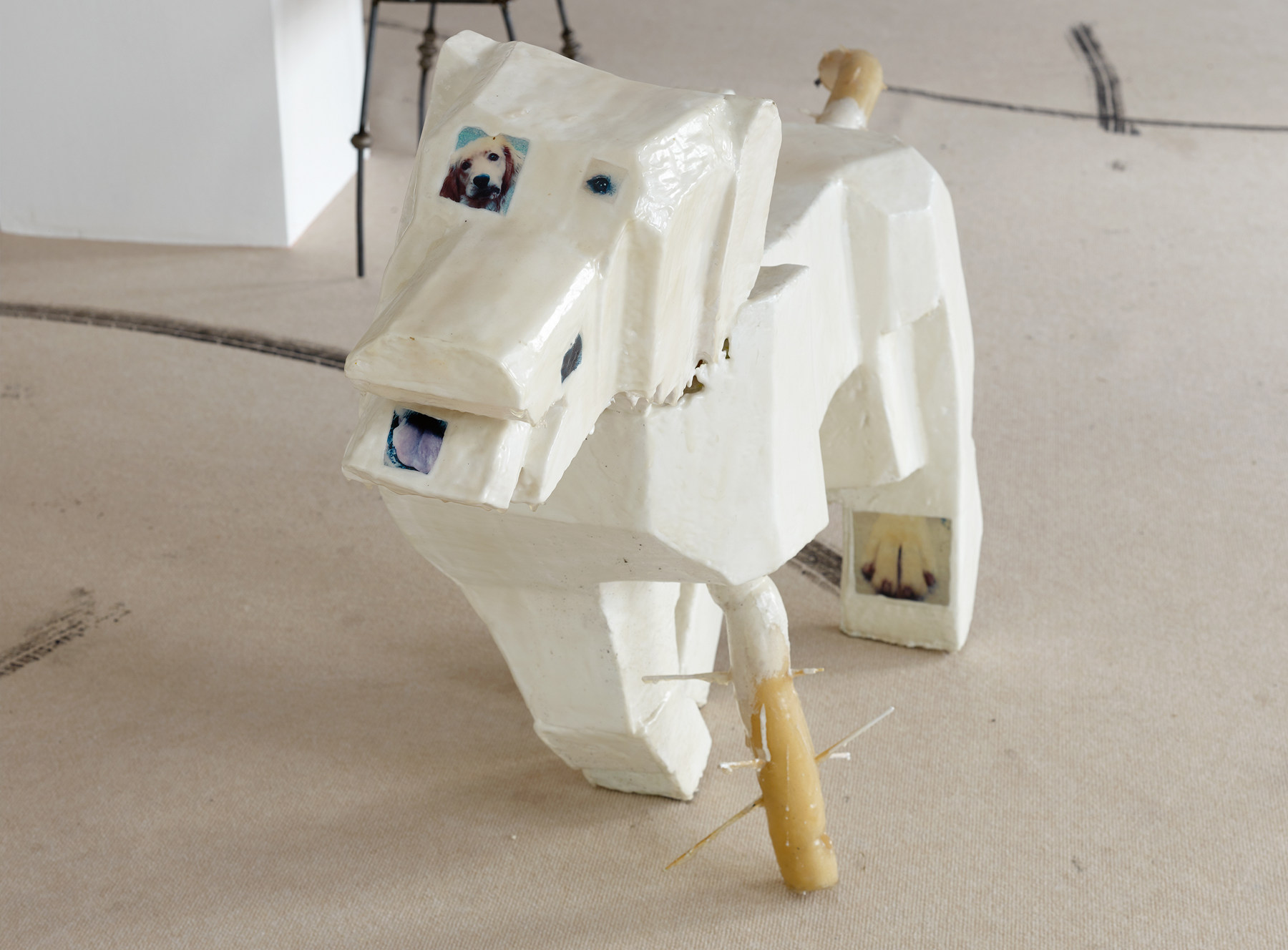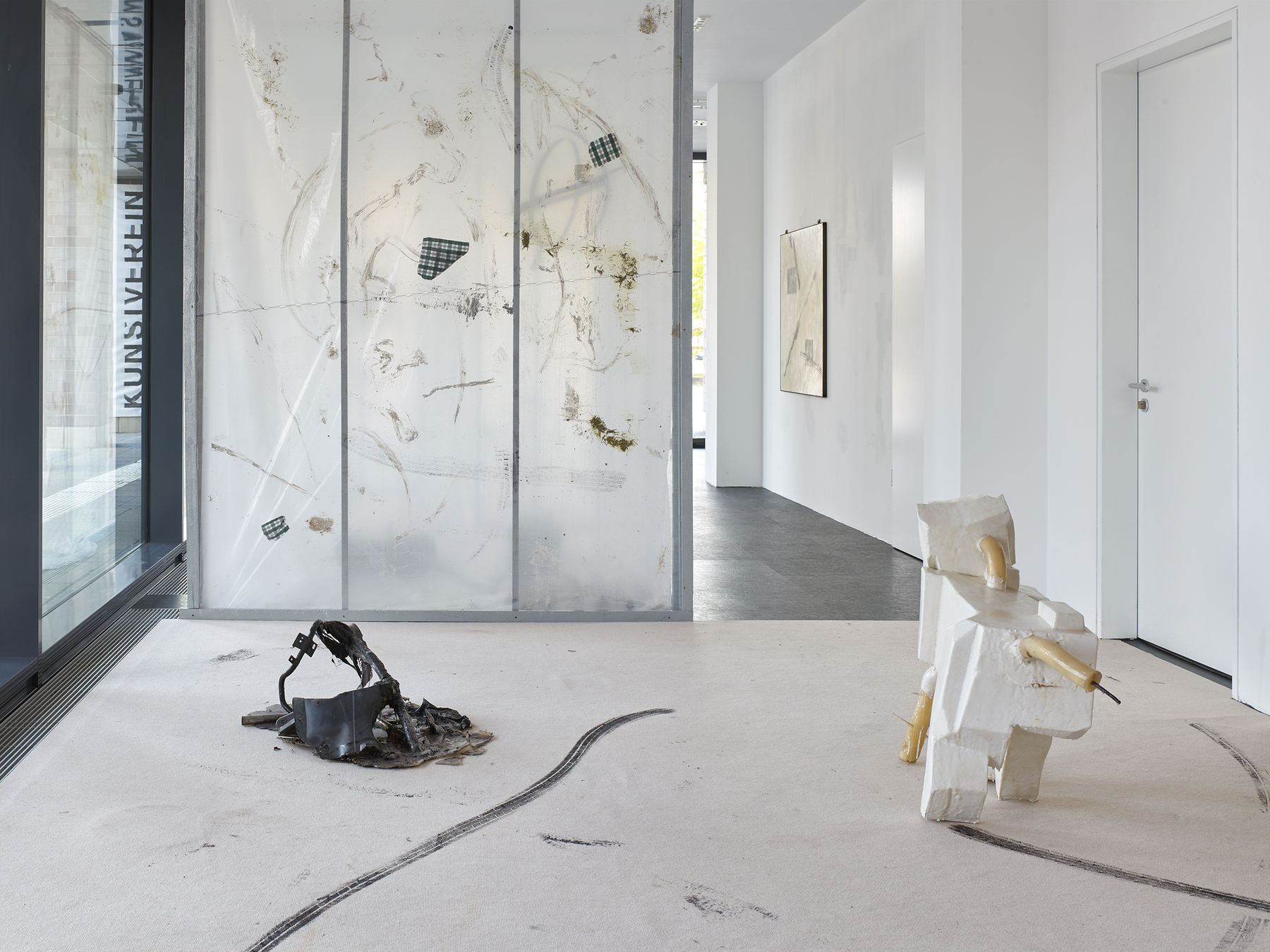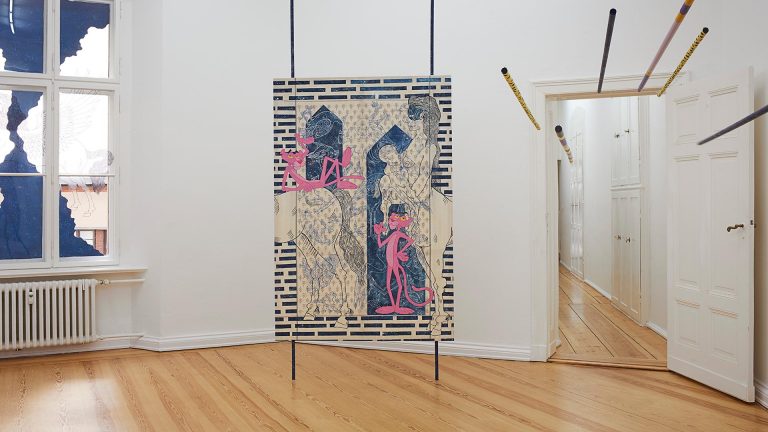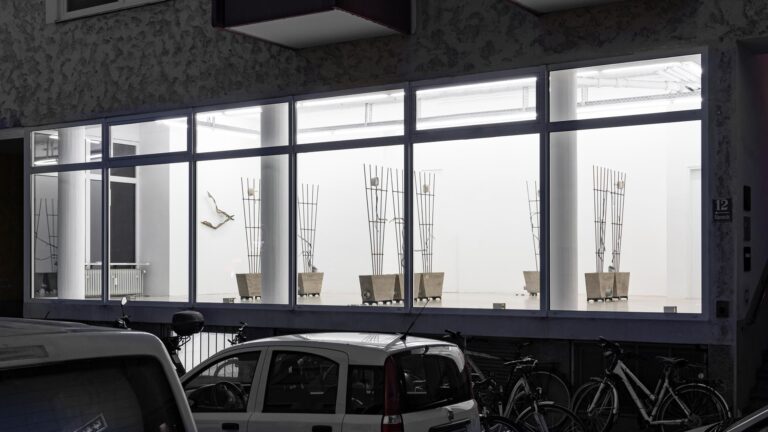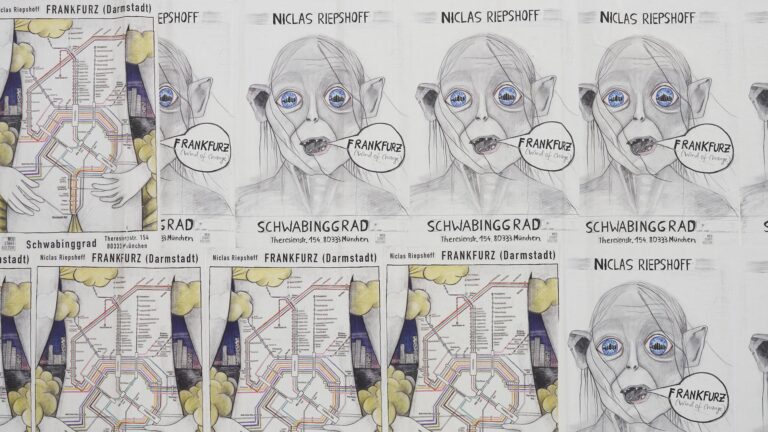Artists: Ben Burgis & Ksenia Pedan
Exhibition title: Golf Musk
Curated by: Oriane Durand
Venue: Dortmunder Kunstverein, Dortmund, Germany
Date: August 9 – November 12, 2017
Photography: all images copyright and courtesy of the artists and Dortmunder Kunstverein
Ben Burgis (*1983 in England) and Ksenia Pedan (*1986 in Ukraine), both living and working in London, have been collaborating since 2011, creating sculptural works and installation together. In their exhibition Golf Musk, Burgis and Pedan raise questions about the meaning of status symbols and the material hierarchies originating from them.
The domestic lies at the heart of Burgis’ & Pedan’s interest: Their partially molten or somehow fluid and peculiarly warped synthetic interiors, with deformed and at times newly articulated objects, are borrowed from the common household: tables, shelves, chairs, wall panels, and sculptures made of resin, wood, foam, and metal. The objects belong to the everyday while blurring at the same time, as if reflected by a distorting mirror. Burgis & Pedan create a kind of obscure interior, which could be described as a psychologically crooked space.
As such, the installation Golf Musk has been conceived as an interior that reflects the story and lifestyle of a fictional character. A dominant person, who prefers to play behind the curtain, doesn’t pay attention to his surroundings and to this house lovingly outfitted with expensive materials and objects. A shoe lies abandoned on the floor while stains of red wine spread out over the carpet. Oddly enough, marks of a tyre crisscross the room, leaving with it a trail of mud, vestiges of a motorbike seemingly driving straight into this “living room”. Several signs suggest the social status of the fictitious character: a painting with an image of a golf course, pseudodesign objects, a rusty hashtag that hangs like a corporate logo in a massive reception area of a global player, concrete skeletons of unfinished high-rises – perhaps the results of failed investments. Through their artistic processing, inverted proportions, and the dirt sticking to them, these objects appear as toys.
The word “Musk” in the title hints to the nature of the fictitious character. Burgis & Pedan associate the word “musky” with older men meeting each other in a whisky bar, smoking cigars and discussing secrets – an atmosphere filled with virile potency. A scene that might remind one of an “Evil Clown” who actually governs on another continent: a powerful person who sees the world as his personal game board.
What sets the environments of Burgis & Pedan apart is their use of dirt as a symbol and means to break through hierarchies – an aspect of their humour that pulls through all parts of the exhibition. The dirt in Golf Musk is both real and lived out – hairs, old shoes, rubbish, metal dust –, but this domestic dirt is used in such a way that is dissolves the borders between the trashy and the careful, the crafty and the industrial, the serious and the trivial. The soft net, spun out over the walls and stained with tire marks, grass, and dust, looks like as a result of a child’s lively playing with the walls in his bedroom. The cute dogs – one of them seemingly morphed with a swine – are seating objects as well as silent observers of the events that occur in the space. The ambivalence between the sweet and the dirty, hard and soft is reminiscent of the film aesthetics of David Cronenberg, crossed with the literature of Philip K. Dick. As such, the shrivelled furnishings of designer lounges, space decoration, paintings, garden chairs, and half-finished brutalist high-rises raise the question of what is simply a toy, an everyday commodity or already considered as art. And so Golf Musk tells narratives of childlike desire, of excess, of material prosperity, and of social, musky decadence, as well as the joy of all expression of art.
Golf Musk is Ben Burgis’ & Ksenia Pedan’s first institutional solo exhibition in Germany. Their last exhibitions took place at Raven Row, London (2017). Jerwood Space, London (2017) and at the gallery Union Pacific, London (2016).



























